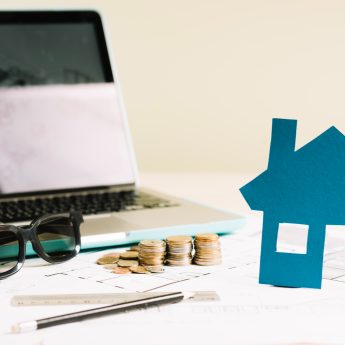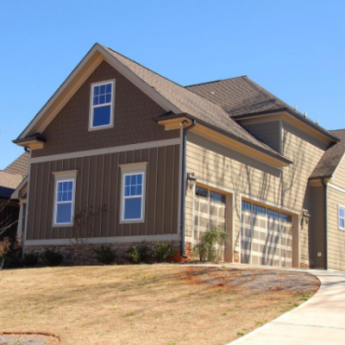Transform Your Home Without the Headaches: Essential Renovation Ideas

So, it’s that time again when you want to refurbish and revamp your home. Now and again comes the time in everyone’s lives when they want a little change – whether it be a big or small change.
Perhaps you are getting tired of the look and feel of your home or perhaps you just want a change of environment. Whatever the cause, if you are looking to revamp your home, then you have come to the right place.
So, continue to read on to learn about the things you must not forget or neglect when revamping your home.
Brief Overview Of Home Renovation
Home renovation can be a highly exhilarating but frustrating process—a way for homeowners to redevelop their spaces in both functionality and aesthetics.
Whether it is a slight change or a full-scale reconstruction, home renovations require proper planning to ensure the process remains hassle-free and that the outcome is exactly as envisioned.
Not only the material or design but everything, from budgeting to timing, is of utmost importance in successfully meeting the end goal.
Effective planning and thoughtful consideration are essential in home renovation projects. Without a clear roadmap, homeowners may face unexpected delays, budget overruns, or unsatisfactory outcomes. Taking the time to define objectives and prioritize needs can make a significant difference in the overall experience and results.
This article delves into “home renovation ideas,” focusing on 18 key aspects to consider during the process. From structural changes to finishing touches, these insights aim to guide readers toward a seamless and rewarding renovation journey.
18 Things You Must Not Neglect When Revamping Your Home
1. Your Roof
A roof is a feature of a house that many people tend to neglect when renovating their homes. After all, it is a feature that is easy to forget since many people do not come in direct contact with it daily.
So, while it is easy to remember that you need to get a new door as the quality is deteriorating, remembering to inspect or repair your roof is a much harder job because you do not see it. So, if you fall into the category of people who neglect their roofs, it is time for that to change.
Rather than neglecting your roof, you must start looking into roofing companies to ensure that your roof is of a good standard. By doing so, you can be assured that your roof is not faulty or a health hazard for your household.
2. The Importance of Color
If you want to revamp your house successfully and positively, then it is important to take into deep consideration the color scheme. Believe it or not, but the color scheme of your home makes a massive difference to the look and feel of your home.

Your home can easily feel disjointed and chaotic if you have failed to choose an appropriate color scheme for the entire house, or at the very least, for each room. By choosing a color scheme, you can be assured that your home looks and feel orderly. So, chose whatever colors you want.
If you have no idea where to begin, then why not ask for the help of an interior designer? It is not that important which colors you chose, but rather, what is more, important is that the colors go well together in an orderly fashion.
You May Also Check: 10 Affordable Interior Design Tips
3. Budgeting
When revamping your home, it can be all too easy to get carried away and stray away from your budget. However, if you want to avoid getting into a financial disaster, then it is extremely important to keep your budget in mind at all times.
Rather than trying to achieve all your revamping goals with a minimalistic budget, why not be selective? Chose which areas you want to focus on and prioritize. Perhaps your priority is repainting your walls or getting a few pieces of statement furniture. Whatever it is, just remember that you cannot do it all at once.
4. Understand Your Goals
Before starting a home revamp, clearly define your objectives. Consider how you use your space and what would make it more functional and visually appealing. Are you updating the look, adding storage, or preparing the home for resale?
Defining your priorities upfront will help you make decisions quickly and ensure that your revamp fits your lifestyle and needs.
Otherwise, without clear goals, you stand at the risk of overspending or ending up with a disjointed design. Set a vision to guide every step of your renovation journey.
5. Research and Inspiration
Take time to gather ideas and inspiration. Browse home design websites, magazines, and social media platforms like Pinterest or Instagram. Look at different styles, materials, and layouts that resonate with your vision.
Visiting showrooms and model homes can also provide hands-on insight into possibilities. By researching thoroughly, you can refine your preferences and create a cohesive design that reflects your personality. Inspiration drives creativity, so don’t rush this phase.
6. Structural Considerations
Always assess the structural integrity of your home before renovations. Check for foundational issues, roof leaks, or outdated wiring and plumbing.
Neglecting structural evaluations can lead to costly surprises down the line. Hire professionals to conduct inspections and address critical repairs.
Structural soundness is vital for safety, longevity, and the overall success of your home revamp. Prioritize this step to avoid setbacks during the renovation process.
7. Planning for Permits and Regulations
Ensure that your plans comply with local building codes and regulations. Research what permits are required for your renovation, whether it is adding extensions, knocking down walls, or altering utilities.
Not obtaining the proper permits may result in fines, legal issues, or delays. Consult professionals or your local building authority to understand the necessary documentation.
Following the legal guidelines is very important to safeguard your investment and have a smooth process of renovation.
8. Budgeting Wisely
Set a realistic budget, accounting for contingencies. Breakdown costs for materials, labor, permits, and finishing touches.
Find the average costs of similar projects in your area to create realistic expectations. Do not skimp on some of the most critical elements, such as safety features or quality materials.
A well-planned budget helps prevent overruns, and it keeps your project running smoothly. Remember to include at least 10% of your budget for unplanned costs.
9. Choosing the Right Contractors
The success of a renovation is based on selecting good contractors. Try to go for licensed professionals with a strong portfolio and positive client reviews. Obtain several quotes and check references before hiring.
Good communication is the key: choose contractors who listen to your needs and provide clear timelines. Building a trustable team ensures that your project will be completed efficiently with a high standard. Never hesitate to invest time in finding the right professionals.
10. Prioritizing Energy Efficiency
Use energy-efficient solutions that will help to reduce utility bills and minimize environmental impact. Upgrade to insulated windows, LED lighting, and energy-efficient appliances. Consider installing solar panels or smart thermostats for long-term savings.
Proper insulation and weatherproofing are very important for indoor comfort. Prioritizing energy efficiency is good for the environment and will also enhance the value of your home. Plan these upgrades early to integrate them seamlessly into your renovation.
11. Selecting Quality Materials
Choose durable and high-quality materials to ensure your renovation stands the test of time. Whether it’s flooring, countertops, or fixtures, investing in quality products reduces long-term maintenance costs.
Research material options that fit your aesthetic while meeting functional needs. Avoid being swayed solely by trends; timeless materials often offer better value. Quality materials enhance both the beauty and durability of your revamped home.
12. Focusing on Layout and Flow
A well-organized layout makes your home more functional and comfortable. Just assess how you move through spaces and make sure the flow is convenient for your lifestyle.
Open floor plans can make a space feel large, while strategically placed walls provide privacy. Consider how natural light enters your home and organize rooms accordingly. Prioritizing a layout and flow makes your home more livable and adaptable for future changes.
13. Incorporating Smart Home Technology
Integrate smart technology for convenience and efficiency. Consider installing features such as automated lighting, security systems, and voice-controlled devices. Smart thermostats and energy monitors help optimize energy usage.
Plan the wiring and connectivity needs at the outset to avoid issues created by retrofitting. Smart home technology will not only update your home but also increase its resale value. Choose systems that are compatible with your lifestyle and in which ease of use is paramount.
14. Enhancing Curb Appeal
Don’t forget the exterior of your house in a renovation: update the landscaping, repaint the facade, or replace the front door for an inviting look.
Adding outdoor lighting and well-maintained pathways enhances safety and aesthetics. A welcoming exterior creates a positive first impression and boosts property value.
Simple upgrades like fresh plants or a new mailbox can make a big difference. Balance functionality with visual appeal for maximum impact.
15. Interior Design Elements
Pay attention to interior design details that tie your spaces together. Choose a consistent color palette, cohesive furnishings, and complementary décor. Add textures through rugs, curtains, or wall treatments for depth.
Focus on creating a balance between style and comfort. Interior design elements reflect your personality and elevate the overall ambiance of your home. Thoughtful design choices bring life to your revamped spaces.
16. Planning for Storage Solutions
Maximize storage to keep your home organized and clutter-free. Incorporate built-in cabinets, shelves, and multifunctional furniture. Consider underutilized spaces like stairs or high ceilings for storage.
Custom solutions, catered specifically to your needs, will enhance both aesthetics and functionality.
Thoughtful storage planning ensures your home stays practical and visually appealing. A clutter-free space gives a sense of calmness and efficiency.
17. Safety and Accessibility Features
Ensure your home accommodates all residents, including those with mobility challenges. Install grab bars in bathrooms, non-slip flooring, and wider doorways for accessibility. Fire alarms, carbon monoxide detectors, and secure locks are essential safety measures.
Plan for aging in place by incorporating universal design principles. Prioritizing safety and accessibility ensure your home remains functional and inclusive for years to come.
18. Final Touches and Personalization
Add personal touches to make your home uniquely yours. Display artwork, family photos, or memorabilia that reflects your personality. Incorporate custom finishes or bespoke furniture for a one-of-a-kind feel.
The final touches complete the transformation but make your space feel warm and inviting. Don’t rush this stage; well-thought-out details leave a lasting impression and add warmth to your home.
19. Maintenance and Future Considerations
Plan for ongoing maintenance to preserve your renovation’s value. Choose easy-to-clean materials and schedule regular inspections for critical systems like HVAC or plumbing. Consider future needs, such as space for growing families or evolving technology.
Proactive maintenance and forward-thinking design ensure your home remains functional and beautiful for years. A well-maintained home is an investment that will yield comfort and security for a long time.
Wrapping It Up!
While revamping your home is an exciting journey, here are important things to keep in mind to make sure it’s a success.
From budgeting and choosing the right contractors to focusing on design and functionality, thoughtful planning will help create a home that’s both beautiful and practical for years to come.
Read Also:











Leave A Reply